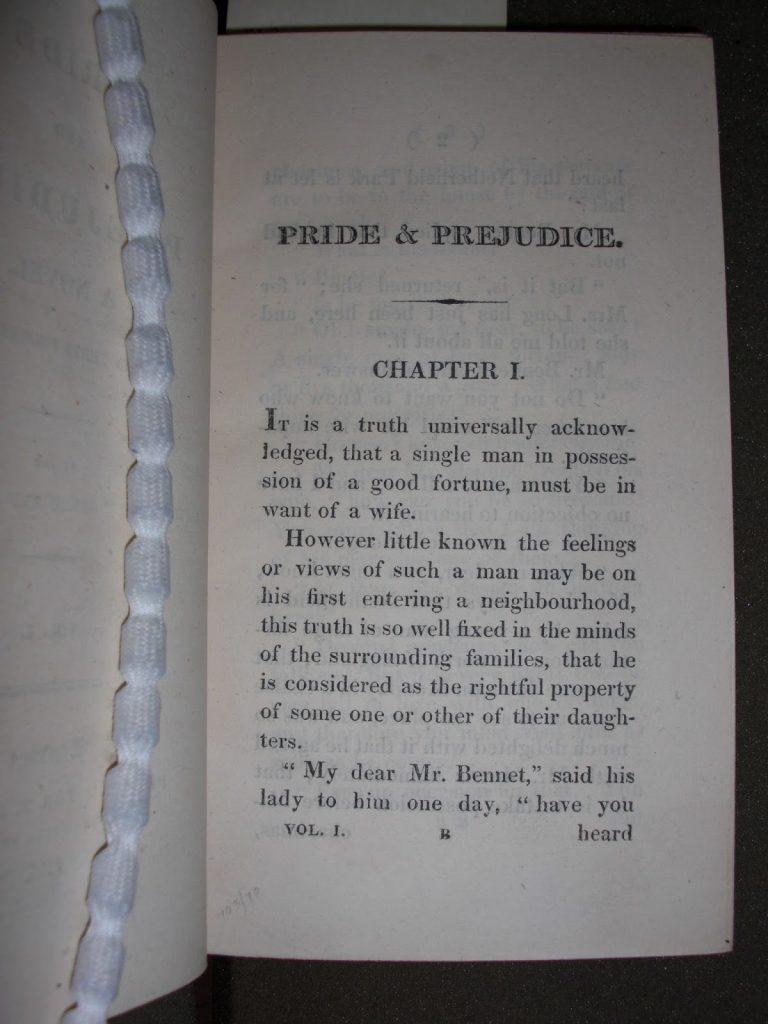The first American publication of a Jane Austen novel was an edition of Emma published by Matthew Carey in Philadelphia in 1816. The novel, Austen’s fourth, had been published in London in December 1815, but dated 1816 on its cover page. American readers did not have to wait long to read the novel that Sir Walter Scott praised in a review as “finished up to nature, and with a precision which delights the reader.” In fact, Scott raved about Austen’s abilities as a novelist in her “art of copying from nature as she really exists in the common walks of life, and presenting to the reader, instead of the splendid scenes of an imaginary world, a correct and striking representation of that which is daily taking place around him.” So, it is not surprising that the publisher Carey in Philadelphia sought to try this new author with American readers. Although the remaining works of Austen would later be published in Philadelphia in the early 1830s, and British editions of her works had also made their way to America, Emma was the first introduction to Austen’s work for most of her American audience. Philadelphians are still reading this remarkable novel 200 years later, as evidenced by the recent celebration of the novel in the city, “Emma: 200 Years of Perfection,” a conference hosted by the Jane Austen Society of North America‘s Eastern Pennsylvania Region.
Thus, Emma has a history in Philadelphia, which is one of the reasons the Rosenbach is presenting a four-session Jane Austen reading group next month. The best reason for choosing to read (or re-read) Emma is because it is a magnificently rewarding experience. Austen didn’t just write a brilliant novel; she quietly revolutionized the art form of the novel itself. Few novels written before Emma are so accomplished in their development of characters and how we discover those
characters during our reading. These are things we take for granted in reading contemporary novels: a point of view in a novel reveals an imaginative world to us. Yet, Austen so subtly played with her narration that she created a work that changes significantly on each reading. Critic John Mullan wrote:
“Its heroine is a self-deluded young woman with the leisure and power to meddle in the lives of her neighbours. The narrative was radically experimental because it was designed to share her delusions. The novel bent narration through the distorting lens of its protagonist’s mind. Though little noticed by most of the pioneers of fiction for the next century and more, it belongs with the great experimental novels of Flaubert or Joyce or Woolf. Woolf wrote that if Austen had lived longer and written more, ‘She would have been the forerunner of Henry James and of Proust’. In Emma, she is.”
Emma is all of this and also boisterous, funny, romantic, and wise. It is the Austen novel that rewards every time you read it. So, join us for some Austen in August in the American city that first published her. As part of the reading group, we will also get up close and personal with some valuable first editions from the Rosenbach’s collection, including one of the first American editions.

I hope you will join us for some Austen in August! See more information about the reading group here, or call 215-732-1600 ext. 0 to register.Wednesdays, 6:00-7:45 pm at the Rosenbach:
Week 1 – August 3: Emma Vol 1 (read before 1st session)
Week 2 – August 10: Emma Vol 2
Week 3 – August 17: Emma Vol 3
Week 4 – August 24: Lady Susan and other early works
